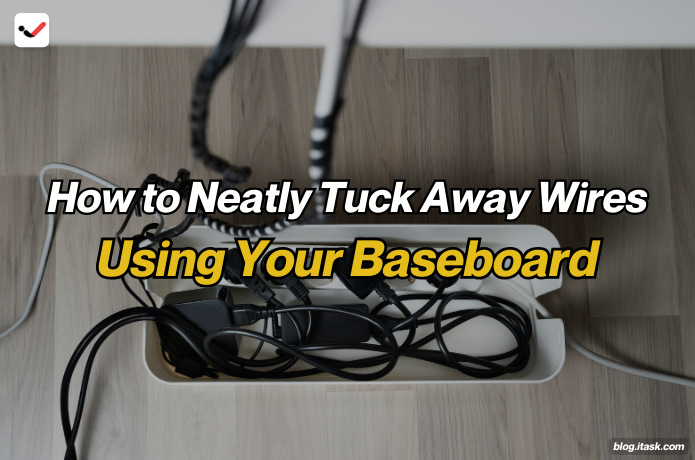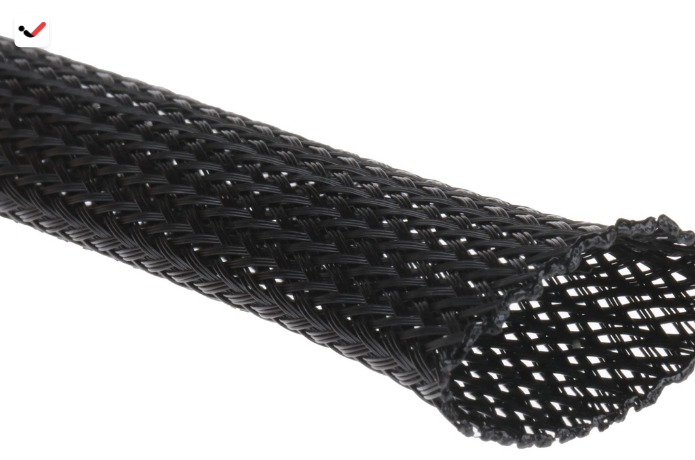How to Neatly Tuck Away Wires Using Your Baseboards
- Carla Louisse
- Nov 8, 2023
- 3 min read

As technology continues to advance, our homes are becoming increasingly wired, with numerous electronic devices and appliances requiring power and connectivity. However, the unsightly tangle of wires can quickly turn a well-designed space into a cluttered and chaotic environment. One solution to this problem is hiding wires in your baseboards. In this article, we will explore various methods and techniques for concealing wires in your baseboards, ensuring that your home remains both functional and aesthetically pleasing.

The Importance of Wire Management
Wire management is a crucial aspect of maintaining an organized and visually appealing living space. Wires running haphazardly across your walls and floors not only look messy but can also present safety hazards. Tripping over exposed wires or accidentally pulling them out of their sockets can result in accidents, damage to electronic equipment, and an overall negative impact on the quality of your home.
Furthermore, well-organized wires and cables can extend the lifespan of your electronic devices by protecting them from dust and accidental damage. By hiding wires in your baseboards, you not only improve the appearance of your home but also ensure the safety and longevity of your gadgets.

Tools and Materials
Before you begin hiding wires in your baseboards, gather the necessary tools and materials. Depending on the method you choose, you may need the following:
Screwdriver
Measuring tape
Utility knife
Cable clips or cable management raceways
Paint (to match your baseboards)
Paintbrush
Wall saw
Wire fishing tools (such as fish tape or a wire puller)
Wire management products (e.g., cable sleeves, cord covers)
Now, let's dive into the various methods to hide wires in your baseboards.

Method 1: Cable Clips or Cable Management Raceways
Cable clips and cable management raceways are simple and cost-effective solutions to keep wires organized and hidden in your baseboards.
Measure the length of the wire you want to conceal.
Attach cable clips or cable management raceways to the baseboard, following the measurement.
Place the wire inside the clips or raceways and secure them in place.
This method is suitable for low-traffic areas and works well for smaller wire bundles. It's an easy and non-permanent solution, making it ideal for renters or those looking for a quick and straightforward wire management option.

Method 2: Painted Cord Covers
If you want a more discreet solution, consider painting cord covers to match your baseboards.
Purchase cord covers that match the color and design of your baseboards.
Measure and cut the cord covers to the desired length.
Secure the cord covers to the baseboard using adhesive backing or screws.
Paint the cord covers to match the baseboard color for a seamless look.
This method offers a clean and polished appearance, as the cord covers blend in with your baseboards. It's a great choice for areas where aesthetics are a priority, such as living rooms and bedrooms.

Method 3: Recessed Baseboard Outlets
Installing recessed baseboard outlets is a more involved but highly effective way to hide wires in your baseboards. This method allows you to plug in electronic devices without the wires being visible.
Turn off the power to the room where you plan to install the outlets.
Use a wall saw to cut a groove in the baseboard, creating a space for the wires.
Install the recessed baseboard outlets according to the manufacturer's instructions.
Run wires through the groove and connect them to the outlets.
Seal the groove with paintable caulk or a matching baseboard cover.
Recessed baseboard outlets provide a seamless and integrated solution for hiding wires while maintaining full access to power and connectivity. They are ideal for home offices, entertainment rooms, and kitchens.

Method 4: Cable Sleeves and Cord Organizers
Cable sleeves and cord organizers are flexible and adjustable solutions that can be used to bundle and conceal wires in your baseboards.
Insert the wires into the cable sleeve or cord organizer.
Secure the sleeve or organizer along the baseboard using adhesive backing or clips.
Adjust the length and shape as needed to ensure a neat and organized appearance.
Cable sleeves and cord organizers are versatile and can accommodate various wire configurations. They are a practical choice for offices, workspaces, and areas with multiple wires to manage.
Hiding wires in your baseboards not only enhances the aesthetics of your home but also contributes to safety and organization. The method you choose will depend on your specific needs, budget, and the level of permanence you desire. Whether you opt for cable clips, painted cord covers, recessed baseboard outlets, or cable sleeves, taking the time to address wire management will transform your living space into a more pleasant and functional environment. So, say goodbye to messy wires and hello to a clean, clutter-free home.






























Comments